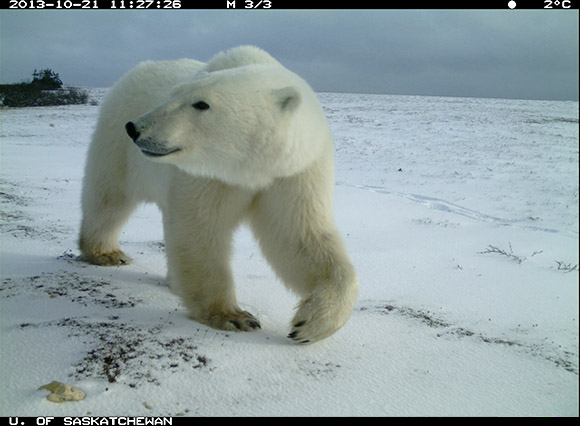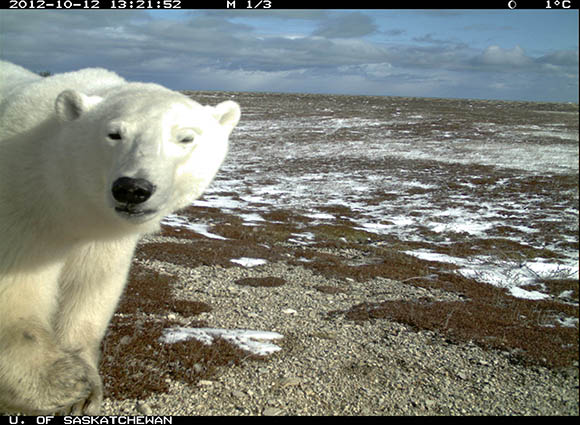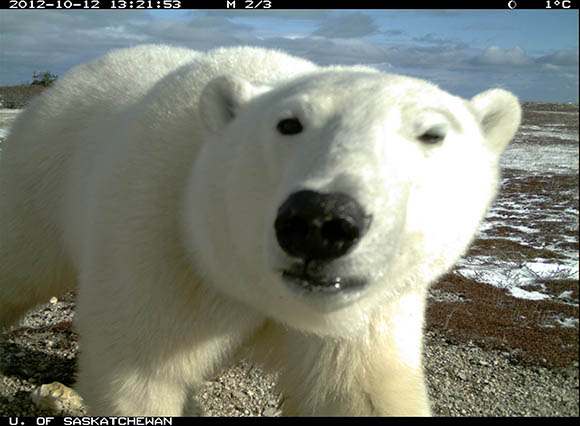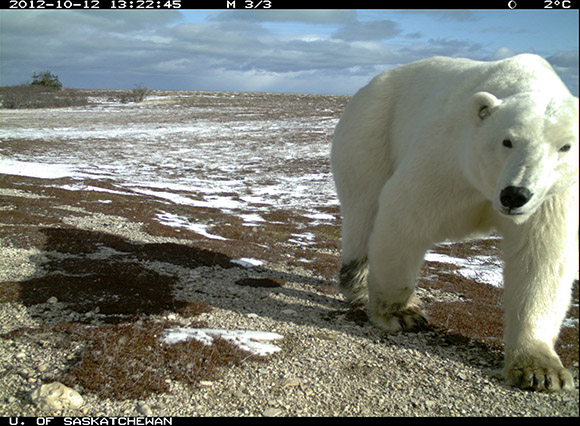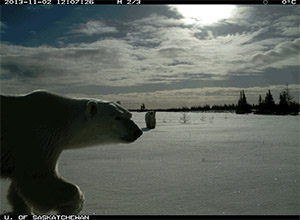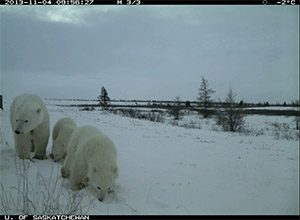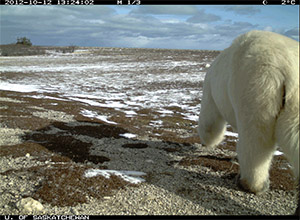Polar bears
Wapusk National Park
Animated gifs
Polar bears (Ursus maritimus) are built to thrive in an arctic marine environment. Translucent fur covers a thick layer of fat, and their small ears and tails help to minimize heat loss. Polar bears have large paws that measure up to 30 cm across, and act as snowshoes and allow them to tread on thin ice. The large paws also assist while in the water, by acting as paddles, making them very efficient swimmers.
The polar bears of the Western Hudson Bay population are forced to come ashore when the ice on the Bay melts. Polar bears congregate along the coastline in Wapusk National Park in the fall, awaiting the arrival of the ice. On the ice the bears are able to hunt seals, the primary component of their diet. They must take advantage of this bountiful time of year, as they survive on stored fat reserves during the ice-free season on land.
Polar bears walk at a pace of 5-6 km/h, and can reach speeds of at least 40 km/h for brief periods of time. Moving at quick paces for extended periods of time can put the bears at risk of overheating when the weather is hot. Polar bears are so well insulated by fur and fat stores that their body temperature and metabolic rate remains constant even at temperatures as low as -37 degrees Celsius. On truly cold days, they will dig a shelter in a snow bank to limit heat loss.
Animated gifs
Polar bears (Ursus maritimus) are built to thrive in an arctic marine environment. Translucent fur covers a thick layer of fat, and their small ears and tails help to minimize heat loss. Polar bears have large paws that measure up to 30 cm across, and act as snowshoes and allow them to tread on thin ice. The large paws also assist while in the water, by acting as paddles, making them very efficient swimmers.
The polar bears of the Western Hudson Bay population are forced to come ashore when the ice on the Bay melts. Polar bears congregate along the coastline in Wapusk National Park in the fall, awaiting the arrival of the ice. On the ice the bears are able to hunt seals, the primary component of their diet. They must take advantage of this bountiful time of year, as they survive on stored fat reserves during the ice-free season on land.
Polar bears walk at a pace of 5-6 km/h, and can reach speeds of at least 40 km/h for brief periods of time. Moving at quick paces for extended periods of time can put the bears at risk of overheating when the weather is hot. Polar bears are so well insulated by fur and fat stores that their body temperature and metabolic rate remains constant even at temperatures as low as -37 degrees Celsius. On truly cold days, they will dig a shelter in a snow bank to limit heat loss.
- Date modified :
